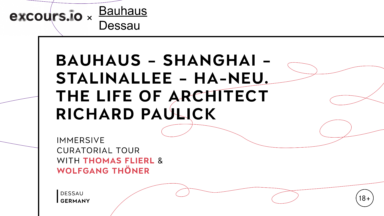Bauhaus – Shanghai – Stalinallee – Ha-Neu. The life of architect Richard Paulick, 1903–1979
Richard Paulick’s career was a mosaic of contradictions — modernist Bauhaus ideals alongside socialist industrialism, avant-garde innovation woven into national architectural traditions. His life was marked by war, shifting ideologies, and forced relocations, yet his dedication to architecture never wavered. Paulick emerged as one of the most influential architects of the German Democratic Republic, breathing new life into war-torn cities like Dresden and Berlin, while also shaping the industrial landscapes of smaller East German towns. Remarkably, his work extended far beyond Europe’s borders, leaving a legacy in pre-communist Shanghai as well. The exhibition at the Bauhaus Dessau Foundation, a beacon of German avant-garde architecture, vividly captures Paulick’s lifelong quest for self-realization in the face of the political and social currents of the 20th century. Through his work, the complexities of personal and ideological resilience unfold, offering viewers a window into both the man and the turbulent world he helped to shape.
Why should you watch this?
This exhibition offers more than just an understanding of Richard Paulick’s architectural legacy — it provides timely insights into the enduring tension between modernism, tradition, and the political influence on design. In today’s context, where cities worldwide face the issues of sustainable development, urban sprawl, and the preservation of cultural identity, Paulick’s work exemplifies the challenges of building for both functionality and aesthetic character under shifting ideologies. The guided tour illuminates how these issues resonate in contemporary debates about urban planning, sustainability, and the role of architecture in shaping not only cities but societal values. Understanding Paulick’s adaptive yet visionary approach offers fresh perspectives on the balance we seek today between innovation and heritage.

